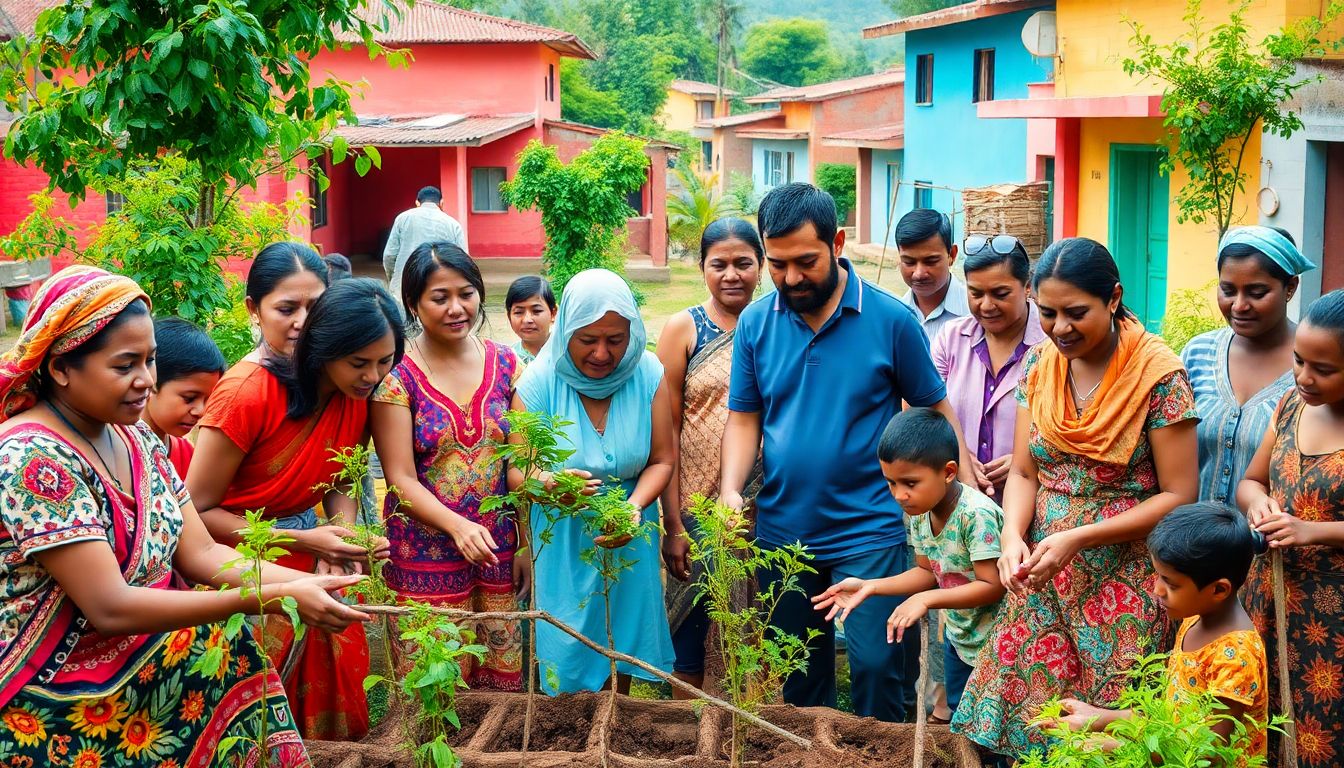
The need for stronger communities around the world is more urgent than ever. Many people face challenges that require help and support. Non-Governmental Organizations (NGOs) play a vital role in promoting community empowerment. They aim to uplift individuals and create lasting change through various initiatives and support systems.
Understanding the NGO Landscape
Types of NGOs and Their Approaches
NGOs come in various forms, each with its unique focus and methods. These include:
- Human Rights NGOs focus on social justice and equality.
- Environmental NGOs work on sustainability and conservation efforts.
- Development NGOs emphasize economic growth and education.
These organizations use different approaches, such as advocacy, direct service, and capacity building, to address specific community needs.
Funding Models and Sustainability Challenges
Funding is crucial for NGOs to operate effectively. Common sources include:
- Government grants
- Private donations
- Corporate sponsorships
However, NGOs often face challenges in maintaining sustainable funding. To achieve long-term impact, many organizations are exploring social enterprise models and innovative fundraising strategies.
Measuring the Effectiveness of NGO Interventions
Understanding the impact of NGO work is essential. They often use metrics such as:
- Number of people educated
- Health improvements in communities
- Economic growth statistics
These metrics help NGOs adjust their strategies and prove their effectiveness to funders and stakeholders.
Case Studies: NGOs Driving Community Change
Example 1: Successful Community Development Project in India
A notable project in India focuses on rural livelihoods. This NGO aimed to enhance agricultural practices among local farmers.
Project Goals and Methodology
Goals included increasing crop yield and promoting sustainable farming techniques. The methodology involved training sessions, providing resources, and fostering local cooperatives.
Measurable Outcomes and Impact
Within two years, participating farmers experienced a 30% increase in crop production. This growth significantly improved their incomes and overall community health.
Example 2: Addressing Health Issues in Kenya
A Kenyan NGO tackled the issue of maternal healthcare through an outreach program.
Challenges Overcome and Lessons Learned
One significant challenge was limited access to medical facilities. The NGO deployed mobile clinics to remote areas, demonstrating the importance of adaptability in their approach.
Long-Term Sustainability Strategies
To ensure ongoing success, the organization trained local health workers and established community health committees. This empowered locals to take charge of health initiatives.
Empowering Communities Through Education and Skill-Building
Literacy Programs and Their Impact
Education is key to community empowerment. Many NGOs focus on literacy as a foundational skill, influencing job opportunities and economic growth.
Statistics on Literacy Rates and Economic Opportunity
Globally, literacy can boost incomes by up to 10%. Unfortunately, 773 million adults remain illiterate, limiting their potential.
Examples of Successful Literacy Programs
One example is an NGO operating in Bangladesh, where a community-based program increased literacy rates among women by 50%. This success demonstrates the power of targeted education.
Vocational Training and Economic Empowerment
Vocational training sends ripples of positive change through communities.
Data on Job Creation and Income Generation Through Skills Training
According to the International Labour Organization, vocational training can increase employment rates by 30%. This training opens doors to better-paying jobs.
Case Studies of Effective Vocational Training Initiatives
An NGO in Mexico successfully implemented a program that trained young people in computer skills, resulting in job placements for 70% of participants.
Promoting Health and Well-being in Communities
Access to Healthcare and Public Health Initiatives
Health remains a top priority for communities. NGOs are pivotal in bridging gaps in healthcare access.
Statistics on Health Disparities and Access to Care
In many regions, there are stark disparities. For example, nearly half of the world’s population lacks access to essential health services, as reported by the World Health Organization.
Examples of Successful Health Initiatives Implemented by NGOs
A prominent NGO in Uganda established health camps that immunized over 20,000 children in one year, making a significant impact on local health outcomes.
Promoting Mental Health and Well-being
Mental health often gets overlooked but is vital for community strength.
Data on Mental Health Challenges in Underserved Communities
Statistics show that around 1 in 5 people experience mental health issues globally, especially in disadvantaged communities.
Examples of NGO Programs Addressing Mental Health Needs
An NGO in Brazil launched support groups and counseling services for youth, reducing stigma and improving overall mental health conditions.
Fostering Sustainable Development and Environmental Protection
Community-Based Environmental Conservation Projects
Sustainability is essential for future generations. NGOs are leading the charge in environmental protection.
Examples of Successful Community-Led Conservation Projects
In Kenya, an NGO partnered with local tribes to protect wildlife habitats, leading to a significant increase in biodiversity.
Strategies for Long-Term Sustainability and Community Ownership
Training locals in conservation practices fosters ownership and ensures continuity of successful projects.
Promoting Sustainable Livelihoods and Economic Opportunities
Economic stability goes hand in hand with environmental health.
Data on the Impact of Sustainable Practices on Local Economies
Sustainable agriculture programs can boost local economies significantly, with data showing a 20% increase in farmer incomes.
Examples of NGOs Promoting Sustainable Agriculture or Tourism
A successful NGO in Thailand helped farmers transition to organic farming, resulting in better crop quality and higher market prices.
Conclusion: A Collaborative Approach to Lasting Change
Key Takeaways: The Power of Partnerships
NGOs are essential in empowering communities. Their partnerships with local groups, businesses, and government entities can amplify impact.
The Future of NGO-Community Collaboration
As the world faces new challenges, the collaboration between communities and NGOs will be crucial in tackling these issues effectively.
Call to Action: How Individuals Can Contribute
Everyone can play a role. Volunteer, donate, or simply spread the word about local NGOs. Your support can lead to lasting change and empowered communities.